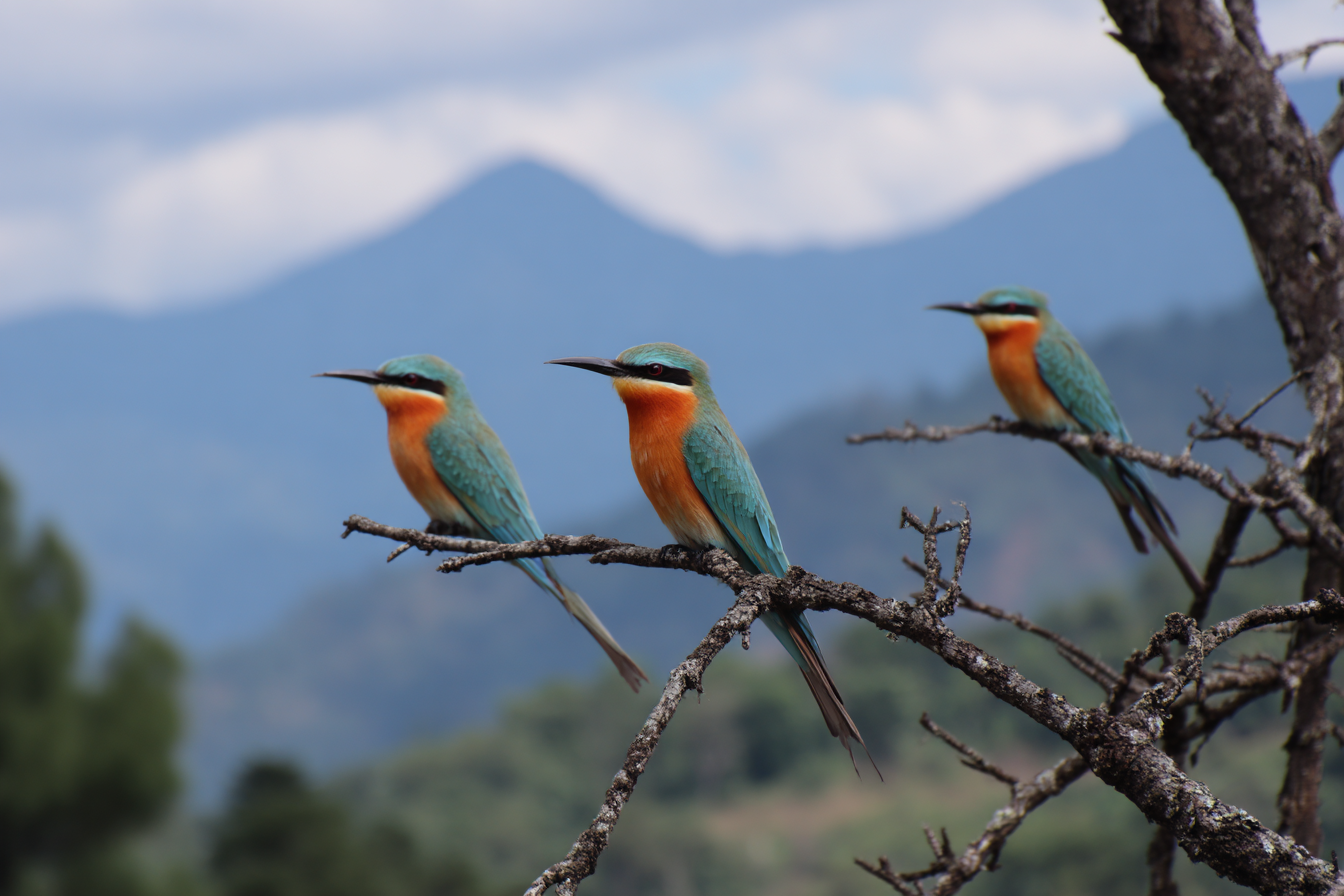Chitwan National Park, nestled in the heart of Nepal, is renowned for its rich biodiversity, but it’s particularly famous among bird enthusiasts for its spectacular avian life. This UNESCO World Heritage site offers a unique haven where bird watchers can witness a stunning array of feathered species in their natural habitat. Whether you’re an avid birder or a curious traveler wanting to experience nature intimately, Chitwan promises an unforgettable bird watching adventure. Let’s take a closer look at what makes Chitwan a prime destination for bird watching, including the best spots, species you might encounter, helpful tips, and the importance of conservation in the region.
Overview of Birds in Chitwan
Chitwan National Park boasts over 500 bird species, making it one of the richest bird habitats in Nepal and the entire South Asian region. The diversity is due to its range of ecosystems — from dense sal forests and grasslands to riverine areas and lakes. This variety of habitats supports both resident and migratory birds, contributing to an ever-changing bird watching experience throughout the year.
Birds in Chitwan vary widely, including tropical forest dwellers, wetland specialists, grassland birds, and riverine species. During migratory seasons, the park becomes a vital stopover point for numerous species traveling from the northern Himalayas and even Siberia. The result is a captivating blend of colorful, exotic, and rare birds, some found only in South Asia.
Best Bird Watching Areas Within the Park
To maximize your chances of spotting a fantastic variety of birds, it’s important to know the best locations within Chitwan National Park. Some of the prime birding spots include:
- Rapti River Banks: The riverine habitats along the Rapti River are hotspots for spotting kingfishers, herons, and waterfowl. Early morning visits here often reward bird watchers with views of the stunning Stork-billed Kingfisher and the majestic Great Hornbill.
- Beeshazar Lake: This large wetland area is known for attracting migratory water birds such as Bar-headed Geese, Pochards, and Ferruginous Ducks during the winter months.
- Sal Forest Region: The dense sal (Shorea robusta) forest is home to many woodland birds, including various species of woodpeckers, cuckoos, and the elusive Rufous-necked Hornbill.
- Sauraha Grasslands: The grassland areas near Sauraha village are fantastic for spotting raptors, quails, and different species of thrushes and pipits.
- Dangmai River Area: This part of the park provides excellent opportunities to see marsh birds like the Pheasant-tailed Jacana and the Bronze-winged Jacana.
Exploring these locations at different times of day will uncover changing bird activity, with early mornings and late afternoons generally being the most rewarding.
Common and Rare Bird Species
Bird watchers visiting Chitwan can expect a delightful mix of both common and rare bird species. Some of the frequently sighted birds include:
- Greater Racket-tailed Drongo
- Indian Roller
- Oriental Pied Hornbill
- Black Drongo
- Red Junglefowl
However, it’s the rarer birds that make Chitwan so special:
- Rufous-necked Hornbill: A rare and majestic bird, notable for its striking colors and the unique casque on its beak.
- Jungle Owlet: Harder to spot due to its nocturnal nature but occasionally glimpsed during dawn or dusk.
- Slender-billed Vulture: Critically endangered and rarely seen, its presence signals successful conservation efforts.
- Malayan Night Heron: A nocturnal bird that adds a mysterious element to night safaris.
- Green-billed Malkoha: A skulking forest bird known for its elusive nature.
Many migratory birds like the Bar-headed Goose and Common Teal also grace the park’s wetlands in winter, making seasonal visits especially rewarding. Carrying a local bird guidebook or using a bird identification app can help you distinguish species you encounter.
Recommended Equipment and Tips
To fully enjoy bird watching in Chitwan, having the right equipment and knowing some essential tips can make all the difference:
- Binoculars: A good pair of binoculars is indispensable. Opt for ones with 8x to 10x magnification for clear, close-up views without disturbing the birds.
- Camera/Smartphone: Bring along a camera with a zoom lens if you want to capture photos. High-quality smartphone cameras with zoom and stabilization features can also be very effective.
- Bird Identification Guide: Either a printed guidebook or apps like eBird or Merlin Bird ID app can help you identify species in real-time.
- Appropriate Clothing: Wear neutral or earth-toned clothes to blend in with nature, and long sleeves and pants to protect against insects.
- Timing Your Visits: Early mornings and late afternoons are prime times when birds are most active. Avoid loud noises and sudden movements to keep from scaring them away.
- Stay Hydrated and Prepared: Bring water, snacks, insect repellent, and sun protection, especially if you’re planning to bird watch for several hours.
Guided Bird Watching Tours
While wandering solo can be rewarding, joining a guided bird watching tour in Chitwan enriches the experience. Knowledgeable local guides bring several advantages:
- Expertise: Guides know where to find specific birds, the best times to spot them, and can provide insights into their habits and ecology.
- Safety: Chitwan is home to wildlife like rhinoceros and elephants, so a guide’s presence ensures a safer and more responsible exploration of the park.
- Local Culture: Many guides share fascinating stories about the local Tharu people and the cultural significance of the region’s birds.
These tours typically include early morning sunrise walks, boat rides along the Rapti River, and sometimes even jeep safaris focused on bird watching. Opting for a customized private tour or joining a small group depends on your preference and budget.
Conservation Efforts Related to Birds
Chitwan National Park is not just a sanctuary for birds and wildlife but also a hub for dedicated conservation efforts. The park management collaborates with local communities, national bodies, and international organizations to protect endangered bird species and their habitats.
Efforts include:
- Monitoring and research projects to track bird populations and migratory patterns
- Habitat restoration and anti-poaching patrols to safeguard vulnerable species
- Community-based conservation programs promoting sustainable forest and wetland use
- Educational initiatives to raise awareness about the ecological importance of birds to the local population and visitors
As a visitor, you can contribute by following park guidelines, minimizing disturbance to wildlife, and supporting eco-friendly tourism operators who prioritize conservation.
Embracing the Avian Beauty of Chitwan
Bird watching in Chitwan National Park offers a rewarding way to connect with nature and experience the vibrant life of Nepal’s wilderness. With diverse ecosystems teeming with more than 500 bird species, stunning natural landscapes, and committed conservation efforts, Chitwan is a dream destination for bird lovers of all levels.
Whether you are spotting the playful antics of the Greater Racket-tailed Drongo, spotting a rare Rufous-necked Hornbill, or quietly listening to the morning chorus along the Rapti River, Chitwan ensures your bird watching journey will be both enjoyable and enlightening. So pack your binoculars, bring your sense of adventure, and get ready to immerse yourself in the magnificent world of birds that makes Chitwan an avian paradise.







